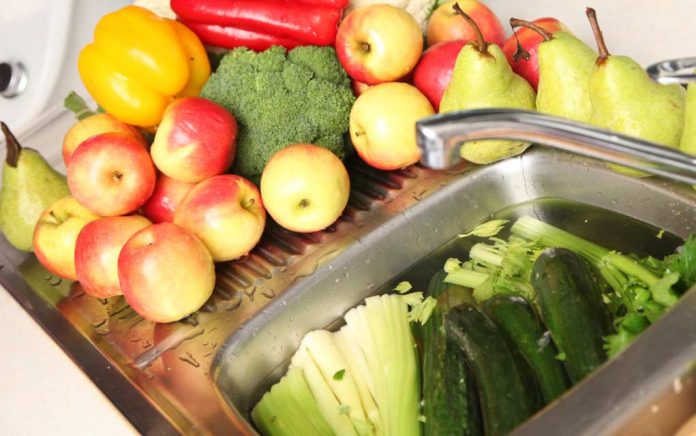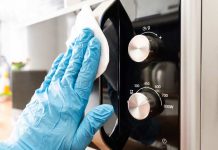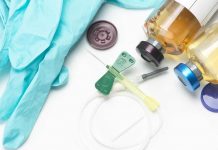
(AscendHealthy.com) – Depending on where you get it and what you’re buying, your produce may be riddled with chemicals and microorganisms. Even organic produce can wind up with residue that needs to be removed. What’s the best way to get your fruits and veggies clean? They definitely need more than a quick rinse.
| Quick Read: Even organic produce can wind up with residue you don’t want in your meals. Whenever possible, wash your fresh produce by taking the time to soak it in a baking soda solution before scrubbing and rinsing under fresh, running water. Get a detailed step-by-step in the article below. |
Take these 3 Steps to Wash Your Produce the Right Way.
Step #1: Soak
Consumer Reports uncovered that the typical U.S. resident has traces of 29 pesticides in their body. We don’t know the long-term effects of these chemicals, many of which won’t simply wash off with a quick rinse. Loosen their hold on your fruits and veggies by starting them off with a good soak. Choose a water temperature that’s similar to the item you’ll be washing since hotter temperatures can drive microorganisms deeper into the food.
Researchers at the Massachusetts Pesticide Analysis Laboratory in Amherst, MA teamed up with other local authorities to test the best way to do this. They found a solution of 1 teaspoon baking soda per 2 cups of water was more effective in cleaning residue off apples than bleach or plain water. It took a surprising 12 to 15 minutes for the solution to clear the apples of all external residue — but 20% of one pesticide and 4.4% of another made their way deep into the skin, where they were safe from the cleaning solutions.
Don’t want to make your own solution? Try an organic, pre-made veggie wash instead.
Step #2: Scrub
Make sure you get your food as clean as possible by scrubbing what you can after the soak. This will help remove any remaining external residue, especially if your produce didn’t sit in a solution for a full 15 minutes.
Use a dedicated vegetable brush, which should be gentle enough not to damage surfaces but sturdy enough to clear debris off more difficult surfaces like potatoes and carrots. You may need to bypass this step when cleaning particularly delicate produce.
Step #3: Rinse
Give your produce a good, thorough rinse before cooking or eating. Use a colander, if necessary. Use fresh, running water to ensure as little residue as possible remains. Pat dry or use a salad spinner for lettuce and similar produce.
Fresh fruits and vegetables are essential to a healthy diet, but it’s also important to minimize your pesticide exposure. Why take any risks? Soak, scrub and rinse whenever possible to keep your meals as chemical-free as possible.
~Here’s to Your Healthy Ascension!
Copyright 2019, AscendHealthy.com













